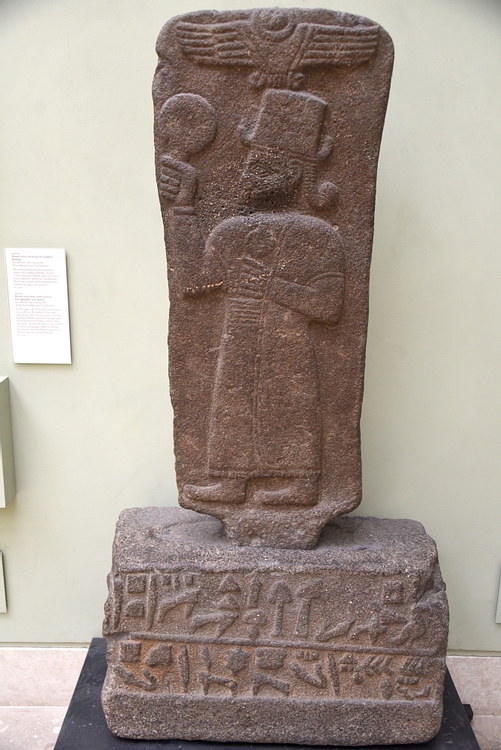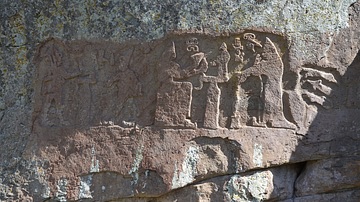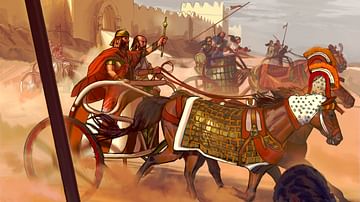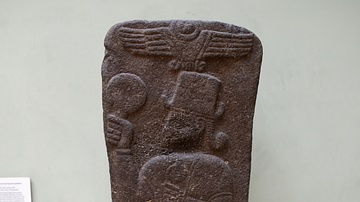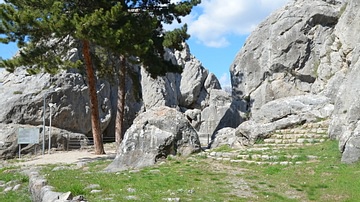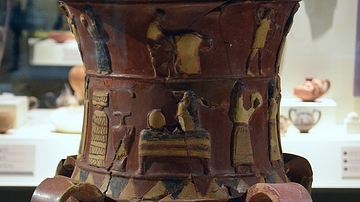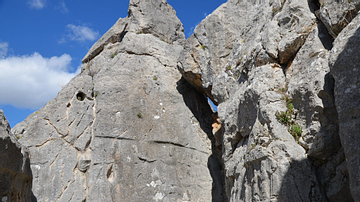Illustration
This image shows two objects:
The free-standing basalt stele depicts the goddess Kubaba, consort of the storm god Teshub, and one of the most important deities at the city of Carchemish. Kubaba stands below a winged-disc and holds a pomegranate and a mirror. It was found in Berick, near Carchemish, modern-day South-East Turkey.
The lower relic is a basalt stele base inscribed with Luwian hieroglyphic inscriptions. The right side of the base mentions a name of an official who states that (in the main text) "No one used to fill in [the goddess] Kubaba's granary but she made me house-lord and I filled it with cereal and wine". The Luwian language is related to Hittite and was used in the Neo-Hittite regions of modern-day Syria during the 1st millennium BCE. the base was found in Yusuf Beg, modern-day Aleppo Governorate, Syria.
Both objects date back to the Neo-Hittite Period, 9th century BCE and both are currently housed in the British Museum in London.
Cite This Work
APA Style
Amin, O. S. M. (2017, September 06). Goddess Kubaba. World History Encyclopedia. Retrieved from https://www.worldhistory.org/image/7198/goddess-kubaba/
Chicago Style
Amin, Osama Shukir Muhammed. "Goddess Kubaba." World History Encyclopedia. Last modified September 06, 2017. https://www.worldhistory.org/image/7198/goddess-kubaba/.
MLA Style
Amin, Osama Shukir Muhammed. "Goddess Kubaba." World History Encyclopedia. World History Encyclopedia, 06 Sep 2017. Web. 25 Apr 2024.
